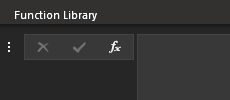Excel formulas (Excel for beginners session 6)
excel
beginner
Excel for beginners
Introduction
This session is part of our Excel for beginners course. That’s a series of six linked sessions, delivered on Teams, that give an introduction to Excel for people working in health and social care. The sessions are:
- Excel first steps
- Tidy data in Excel
- References and names in Excel
- Excel formatting
- Excel tables
- Excel formulas (this session)
Together, they aim to help you develop an appropriate set of Excel skills to help your work. This session covers formulas in Excel:

- for this session, you’ll need to be familiar with the Excel basics (getting around in Excel, opening/saving/closing files)
- you’ll also need to be familiar with A1 referencing, values, and tables
- we’re going to avoid talking about formatting as much as possible today
- you might find the list of Excel shortcuts helpful too
Previous attendees have said…
- 68 previous attendees have left feedback
- 100% would recommend this session to a colleague
- 94% said that this session was pitched correctly

Three random comments from previous attendees
- It is really helpful to be shown a task, and give us the chance to try it for ourselves.
- Great explanation of Formulas! Brendan has an excellent manner for training!
- Very clear, helpful practical intro / review of formulas and simple functions in Excel
Forthcoming session(s)
| Booking link | Date |
|---|---|
| Excel formulas (Excel for beginners session 6) | 10:00-11:30 Thu 11th December 2025 |
| Excel formulas (Excel for beginners session 6) | 15:00-16:30 Tue 17th February 2026 |
| Excel formulas (Excel for beginners session 6) | 13:00-14:30 Wed 3rd June 2026 |
Video overview
Session materials
- sample file
.xlsx
Session outline
- values and formulas
- simple functions
- references in formulas
Values and formulas
- cells in Excel contain either values, or formulas
- we’ll start with some data derived from NRS 2022 population estimates
- make sure you have the sample data available
Values

- when you enter some data in a cell, we call that a value
- values look the same in their cell as in the formula bar
Formulas
- we can also make a value using a formula
- Excel evaluates/calculates the formula, then displays the result as a value
- in an empty cell, try entering
= 2 + 2

Example formulas
- we can do ordinary arithmetic in formulas
/,*,-,+… - you can also try
&which joins values= "This number is " & 5
Functions
- But most formulas use functions, which are like the verbs of Excel
- Try
= SUM(2, 2)
Adding functions
- you can type functions in by name (as above)
- you can also add from the
Formulasarea of the ribbon
- or you can use the \(fx\) button by the formula bar

Function arguments
- adding a function by \(fx\) or the menu brings up the Function Arguments interface

- This is a helpful builder for more complicated functions
What are arguments?
-
arguments are the values we supply to a function
- in
=SUM(2,3), the arguments are2and3
- in
- we separate arguments with a comma
, - we need to be sure we’re supplying the right arguments in the right order (this gets described as the syntax of a function)
- we also, while we’re on the jargon, say that functions return a value so
= SUM(4,3)will return7
Useful simple functions
- in the same way as
=SUM(), you can try:AVERAGE-
MINandMAX SUBSTITUTECEILINGTODAYROUND
References in formulas
- mostly, you won’t add values directly into your formulas
- instead, you’ll bring them in from another part of your spreadsheet
- can you use
SUM()to make a totalMale+Femalecolumn in the supplied data?- add a header in cell
G2 - if needed, extend the table to include your new column
- in
G3, enter the formula= SUM(C3, D3) - then copy down the rows by double-clicking the green fill handle

- add a header in cell
Practice
- calculate what proportion of your total population is under 16 (thanks, Lara Paterson (NHS Lanarkshire))
- estimate the population density
- find an average area for each council area
Troubleshooting functions
-
#NAME?= “I don’t recognise that function name” -
#VALUE!= “Your syntax has gone wrong - usually in the wrong order” -
#REF!= “I don’t recognise that reference” -
#DIV/0!= “You’ve divided by zero”